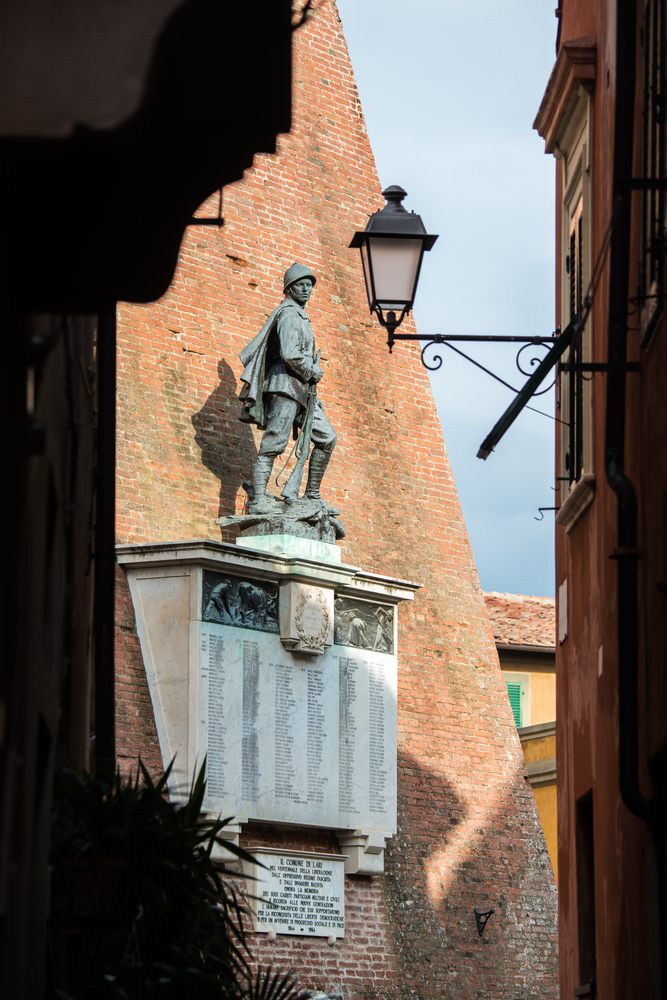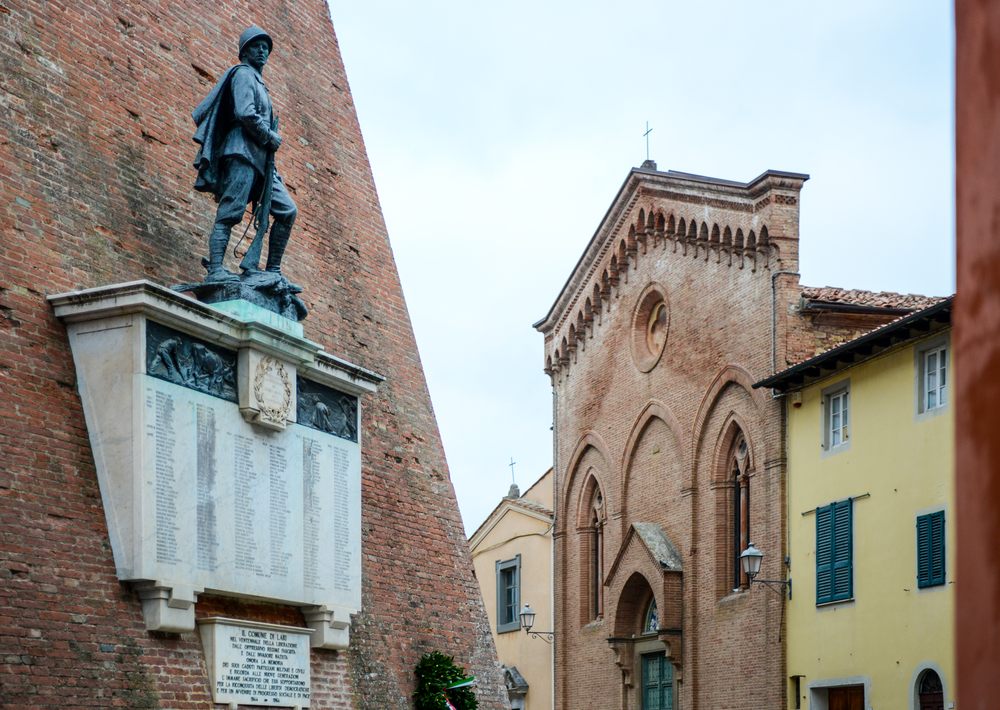After just five months from the day Italy entered the war, in the municipal council of 9 November 1915, the mayor stated that he "felt the need to remember[...]with deep emotion" the names of the "bold youth who fell strongly on the field of honour". Thus, in a conflict, one can say, just started, here is the proposal - approved to acclaim: "that, when the bitter war with Austria is over, the names of those fallen for the homeland are carved into marble slabs". The following years of conflict contributed to the growing dark sense of anxiety for the community of Lari, marked by endless lists of the dead, of prisoners, of the gravely wounded, of the missing, in a situation which seemed unending. Every list came with corresponding annotations about the heroicism "that made the homeland great", always increasingly generic and indistinct, and the growing number of projects to make the plaques to be hung at the end of the war, not only in the capital, but also in the villages.
After 4 November 1918, the initiatives to celebrate victory involved all of Italy. Lari, which could boast of a sad record for the number of casualties, didn't fail to take action quickly, even if with a good amount of uncertainty, due to both an un-corrected opposition between interventionists and neutralists, as well as a burdensome economic situation, put under strain by three hard years of war.
The monument, the work of Valmore Gemignani, who made the bronze statue, and of Alessandro Lazzarini, the artist from Carrara who made the marble table, was only inaugurated on 20 September 1923, just a few months after the Viale della Rimembranza (Avenue of Remembrance), another work dedicated to the fallen - one which is perhaps nearer and dearer to the population judging by its much less troubled genesis.
What perhaps makes the monument so unique are the two bas-reliefs that connect the long list of names of the fallen to the statue of the soldier, but which at the same time also separates them, with the strong reference to civic life, that of agricultural work, which has always been a symbol of peace. This is even more true in this case, where life in the fields is represented by the correlating male (ploughing) and female (harvest) divisions of labour.
For the main figure, probably chosen by the artist, that of a soldier in uniform, he ran the risk of joining the routine representation of this type of figure, anonymous and inexpressive, just like countless others found in Pisa and beyond. Yet Gemignani, choosing to represent a soldier who awaits or who is resting, struck a more amiable and domestic chord, avoiding the reckless formal virtuosity which often results in unlikely acrobatic and plastic-like poses. The numerous citations of classical models, more than just the knowledge of an established artist, make this monument one of the most dense and determined episodes of the entire series of tributes to the fallen in all the province (and beyond). The right sleeve still shows a hole made by a bullet, shot by a German soldier at the end of WWII, probably more a sign of rage, rather than an act against the winner of a long war, towards a common destiny: that of "the best of youth that ends up underground" (as the verse of a song sung by Italian Alpine soldiers, "Sul ponte di Bassano", goes).



